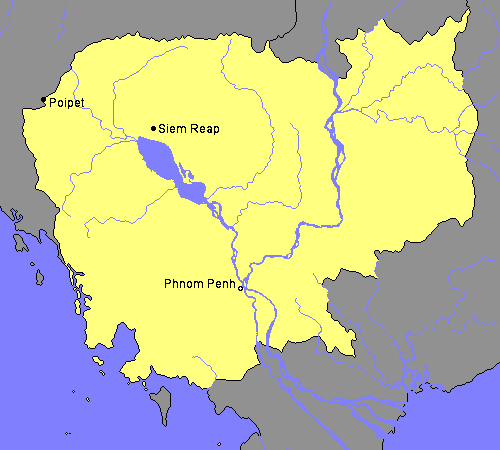
Traveling to Cambodia: We woke up early and started our journey with a three hour drive to Pakse, south of Savannakhet, to catch our flight to Siem Reap, Cambodia. After a short flight, I had to wait in line to get my visa. Peep did not need one. We collected our luggage and caught a taxi to our hotel. Peep used her contacts through her work at Savan Vegas to book the hotel. She also obtained the name of a local guide and, after checking in, we met with him to plan our trip. As it turned out, he was at the airport to pick us up and saw us arrive, but didn't realize we were the ones he was waiting for. We weren't expecting him to be there, so we weren't looking for anyone and missed him holding our name card.
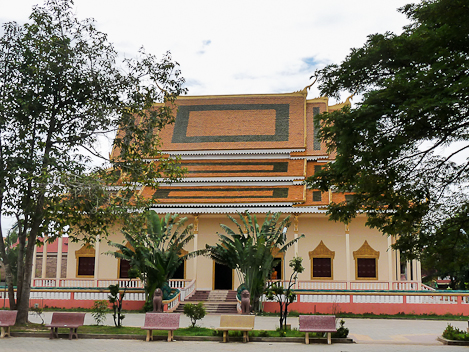
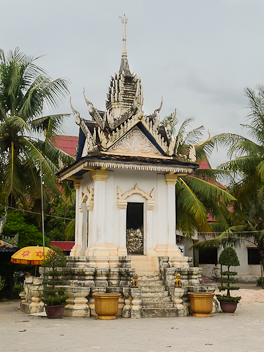
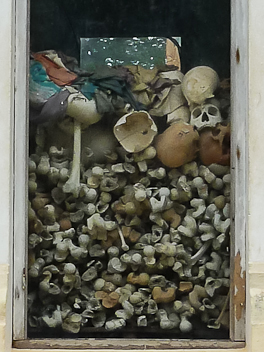
Wat Tep Pothivong: We waited a few minutes while our guide went home to change into his guide uniform before taking us to our first stop, Wat Tep Pothivong, also known as Wat Thmey, or New Temple, as it was called when it was being constructed. Cambodian history is separated into three epochs: pre-Angkor, Angkor, and post-Angkor periods. Most of this history was lost during the reign of Pol Pot, when books were illegal and those found with them were executed. Cambodia is slowly rebuilding its history from foreign sources, particularly China. The temple has a giant stupa filled with the skeletal remains of some of the people executed during Pol Pot's rule, found in the killing fields after the fall of the Khmer Rouge. Pol Pot and the Khmer Rouge came to power with support from the exiled king and China. His armies defeated the invading Vietnamese. After his downfall, he lived the remainder of his life on the run in northwestern Cambodia, laying massive minefields as he moved from place to place. Cambodia currently has more deaths per year from landmines than any other country. It is thought that many of the other leaders of the Khmer Rouge will also die before being brought to trial.
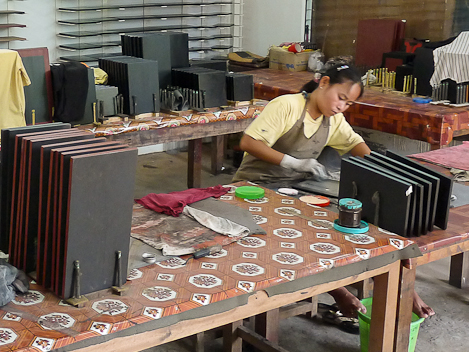
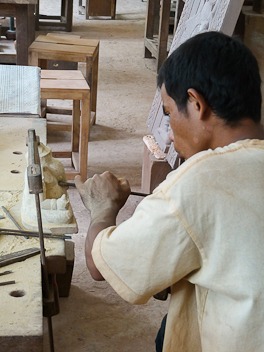
Artisans D’Angkor: Our next stop was a little more upbeat than the first. After a quick lunch we headed to the Artisans D'Angkor. Established in 1998 with financial support from the European Union, Artisans D'Angkor schools its students in the ancient Khmer arts, focusing on ornamental sculpture, lacquer ware, silk weaving and silk painting.
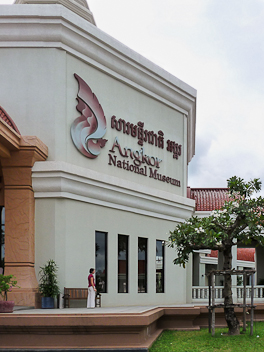
Angkor National Museum: We then continued on to the Angkor National Museum. Opened in 2007, the museum is dedicated to preserving the artifacts and informing the public on Angkor history.
- The collections include the following galleries:
- 1,000 Buddha Images
- Pre-Ankor Period: Khmer Civilization
- Religion and Beliefs
- The Great Khmer Kings
- Angkor Wat
- Angkor Thom
- Story from Stones
- Ancient Costumes
The time spent at the museum was a great precursor to visiting the archeological sites the following day.
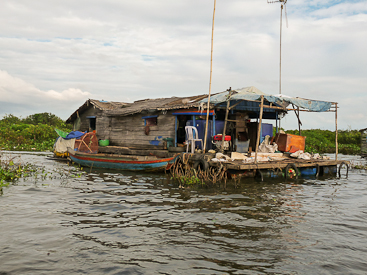
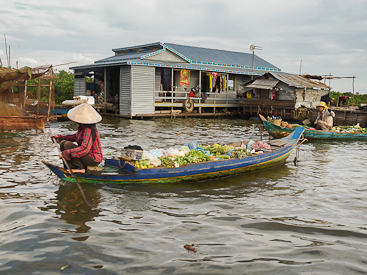
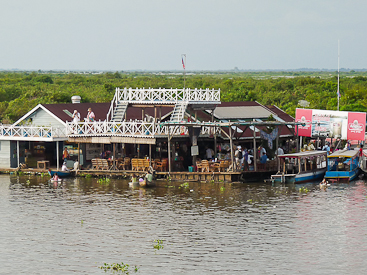
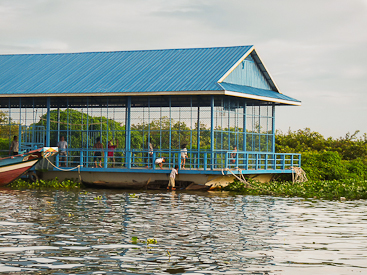
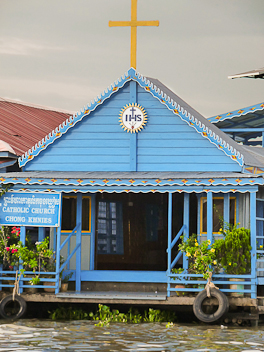
Tonle Sap Lake: A short drive south of Siem Reap brought us to Tonle Sap Lake, the largest freshwater lake in South East Asia. We arrived at the end of the rainy season when the lake is at its biggest, fed from the Mekong River to the south. During the dry season, the flow of the river feeding it reverses, draining the lake into the Mekong until it is only one-sixth its maximum size. We rented a boat and toured one of the floating villages, populated by many ethnic Vietnamese and Cham. The people live on houseboats, moving as the lake swells and recedes. There are also floating schools, restaurants, medical clinics, churches and even a rec center, where we saw some people playing volleyball. As expected, the village survives primarily on fishing.
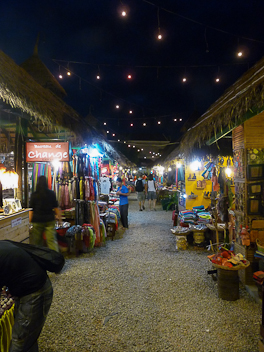
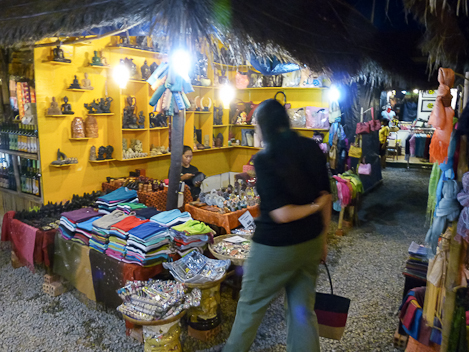
Angkor Night Market: After arriving back in Siem Reap, the guide dropped us off at the night market. We were one of the first tourists there, arriving just as many of the shops started opening up. We purchased some souvenirs, bargaining for great prices as the vendors were eager to make their first sale of the night.
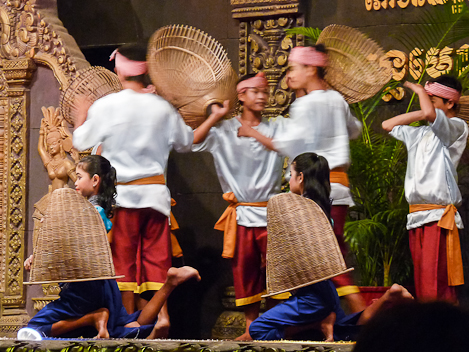
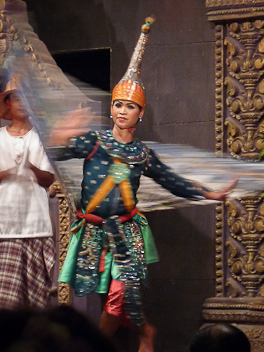
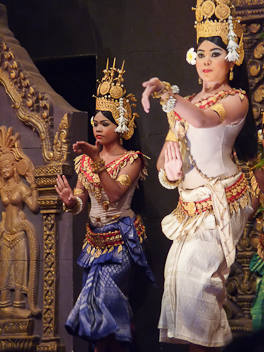
Tonle Mekong Restaurant: For dinner the guide returned and transported us to the Tonle Mekong restaurant for a buffet dinner and a show. The show included a fishing dance, a peacock dance, a coconut dance, and Apsara dancing. Apsara dancing is a traditional dance that used to only be performed for kings, but it is now performed for the public as well. After the show, Peep and I walked back to the Kingdom Angkor Hotel, which was just a short distance down the road from the restaurant.
Nighttime Adventure: After the long day, we each took a shower and then went right to bed. I was in bed quickly falling asleep and Peep just finishing her shower when a drip appeared near the air conditioner. We thought it might be leaking a little and put a trash can underneath to catch all the water. Soon afterward, several more leaks appeared, which turned into steady streams. We called the front desk and they changed our room, upgrading us to a suite.

